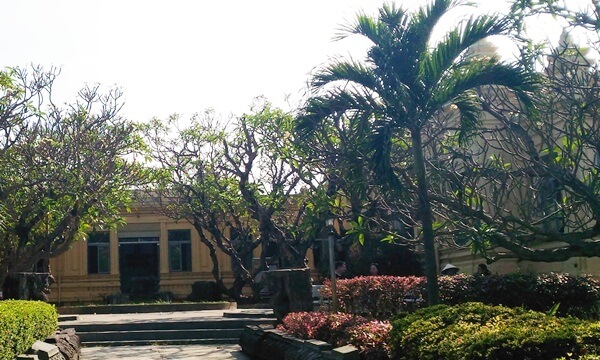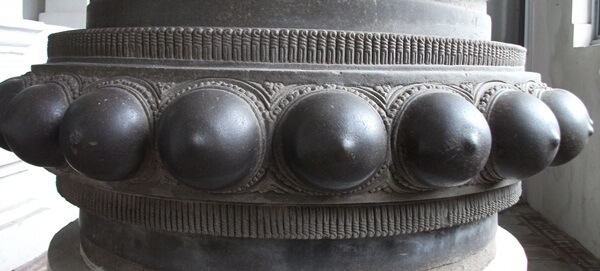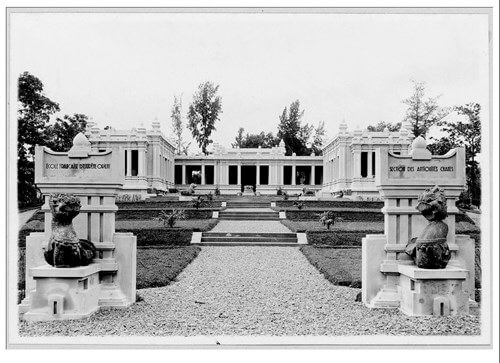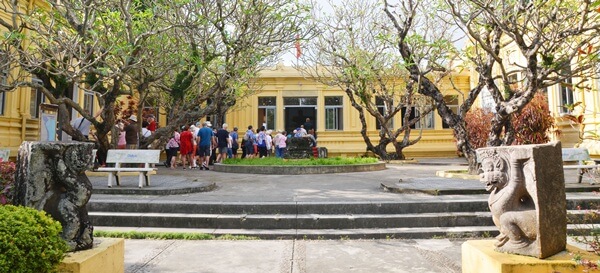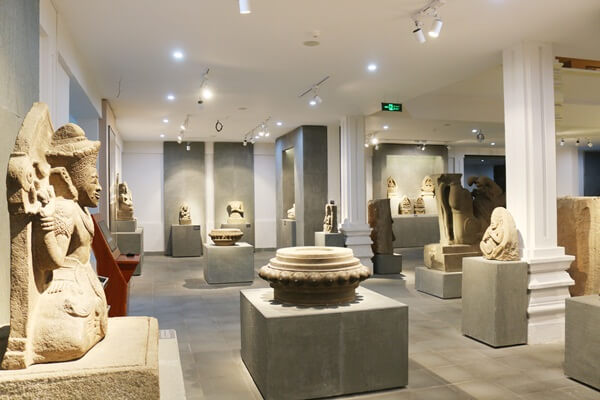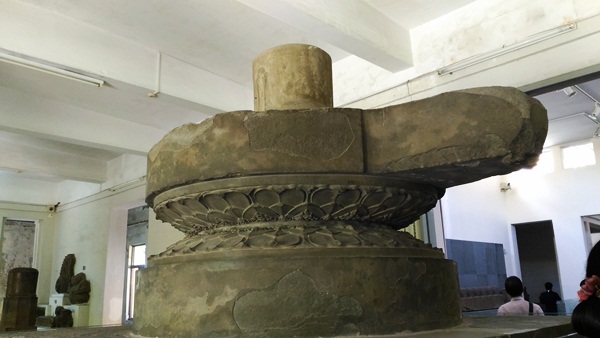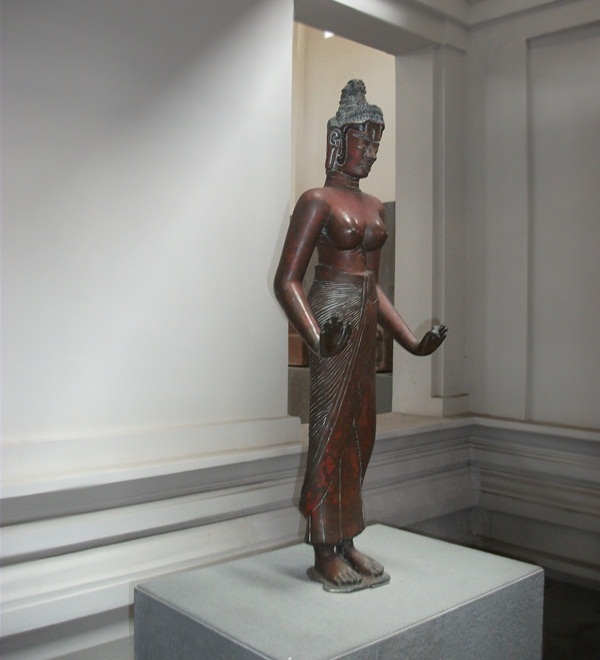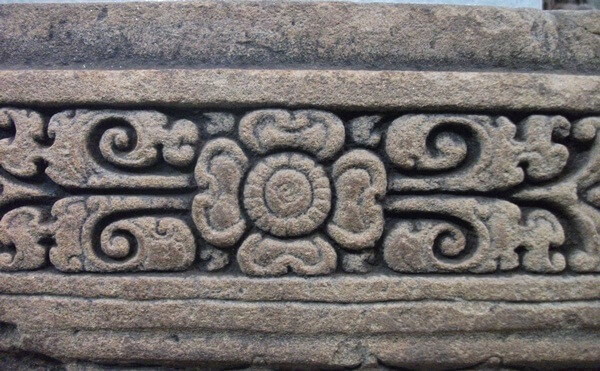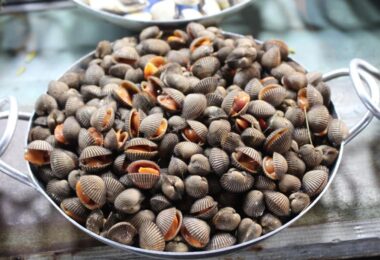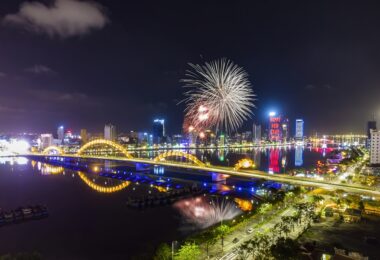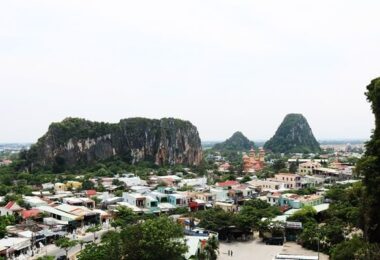Da Nang Museum of Cham Sculpture is located at the intersection of 2/9 street and Trung Nu Vuong streets, opposite the Dragon bridge, easy to find the way for tourists who want to visit.
This place keeps the cultural and historical values of the ancient Champa kingdom. You can find skillful carving on the sandstone statues dating from the 7th to 13th centuries.
Danang Museum of Cham Sculpture
- Address: 02, Sep 2 Street, Hai Chau District, Da Nang City
- Ticket price: 60,000 VND/person
- Opening hours: From 7 am to 5 pm daily
The museum is currently the place to keep the largest Champa cultural artifacts in Vietnam, with a total area of up to 6,600m2. In which, 2,000m2 is used to display ancient artifacts, the rest is the collection of pictures and documents about Cham culture.
Cham Sculpture Museum was officially established to the public in 1919. Thousands of tourists visit it every year to rediscover the imprint of the flourishing Cham kingdom. You can find historical and cultural values in unique sculptural art.
1. The local guiding service in the museum
To study more about the Champa culture, the museum offers two guiding services, including an audio guide and a tour guide for the group.
1.1. To get the description of the automatic Museum of Cham Sculpture, you have to use to scan the code at each object to hear it.
- Log in to the museum’s wifi
- Open a web browser, access the address: https://chamaudio.com
- Select one of three languages: Vietnamese, English, French. You can choose the name of the object you want to hear information about.
You can also turn on the Audio guide and follow the tour sequence introduced. Or you can scan the code attached to the object to hear the information of each object.
1.2. Hire a local guide to visit here
You can hire a local guide at the museum, who can explain details about the artifacts here. It’s better to book a local guide of the museum in advance (recommended at least 3 days in advance) because not sure to have an available guide there when you visit.
Time of guiding service: From 7:30 am to 11 pm. and from 1 pm to 5 pm daily.
2. The brief of development of Cham Museum
The Museum of Cham Sculpture was officially built from 1915 to 1915, but the foundation for this work was made many years before that.
The first collection of Cham sculptures was started at the end of the nineteenth century by the French who loved archeology, especially those who worked for the Ancient School of the Far East (EFEO).
All the ancient objects found were gathered, then called Tourane Park. The idea of building a museum to protect and display artifacts of the Champa civilization also emerged from here.
- 1915: The museum was begun construction,
- 1919: The museum officially opened to the public to visit,
- 1930: The construction museum was expanded for the first time due, to a large number of excavated antiquities. And, rearranged the visiting route in order of regions, and this way has remained the same to this day,
- 2002: For the second time, the museum was expanded, adding an exhibition and storage area, restoration workshop, working and research rooms,
- 2011: Da Nang Museum of Cham Sculpture was listed in the 1st group of the museums in Vietnam, because its contributions in preserving Cham Pa cultural heritage values,
- 2016: Da Nang restored and upgraded buildings and exhibitions, still keeping the original architectural style.
3. What to see in Da Nang Museum of Cham Sculpture
Museum of Cham Sculpture in Da Nang is one of the famous tourist attractions in Da Nang with rich cultural and historical values, telling about the Champa Kingdom.
3.1 Enjoy the beautiful architecture of the Cham Museum building
The museum building was designed by two French architects, Delaval and Auclair, based on the suggestion of Henri Parmentier, who worked in the Department of Archeology of the EFEO Institute.
Using the contours of the Champa temples in combination with architectural European style created a different charm for the building of this museum.
The main building features a flat roof with pointed tips following the motifs of Cham temples, helping the museum stand out in the heart of the city.
The exhibition rooms of the building are designed to be open with many windows, ensuring the display areas are naturally lit.
Entering the museum garden, you will find out an ancient atmosphere with yellow classical blocks, and white frangipani flowers.
3.2. Explore the exhibition rooms
Cham Sculpture Museum in Da Nang City currently owns over 2,000 large and small antiques, of which about 500 are on display, the rest are carefully stored in the warehouse.
These sculptures are mostly original, made on three materials of sandstone, terracotta, and bronze, in which sandstone statues are the most.
All statues and artifacts dating from the 7th to the 15th centuries reflect the cultural, spiritual, and religious life of the Champa people.
Most of the statues depict the gods in Hinduism such as Siva, Naga snake god, Brahma, Vishnu, Laksmi, Linga – Yoni…
It is not only unique in materials, but the objects at the Cham museum also show the skillful talent of sculptural art in shape, content, and ideology.
These artifacts are grouped into exhibition rooms according to the geographical areas where they were excavated such as Dong Duong, Tra Kieu, Thap Ma, My Son, Quang Nam, Da Nang, Quang Binh – Quang Tri – Thua Thien Hue, Quang Ngai, and Binh Dinh – Kon Tum. This division is easy for tourists to visit and easily recognize the unique features of Cham architecture in each locality.
3.3. Admire National Artifacts
At Da Nang Museum of Cham Sculpture, there are currently 6 antiquities listed as national ancient objects, including My Son E1 altar, Tra Kieu altar, Tara Bodhisattva statue, Dong Duong altar, Ghanesa statue, and Gajasimha.
Tra Kieu worshiping alter is an immortal masterpiece of Cham sculpture. The details are elaborately carved, meticulous to every millimeter.
My Son and Dong Duong altars also have skillful carving statues on them, dating from the 7th – 9th centuries.
The statue of Bodhisattva Tara is the only bronze object of Cham Museum in Da Nang. With a height of 1,148m, the largest bronze statue has delicate carvings, exuding majesty and transcendent beauty.
The standing Ganesha statue has an elephant head and human body with the age of the 7th to 8th centuries.
The Gajasimha statue also has an elephant head, but the body is a lion, showing the strong power of a holy animal, dated from the 7th – 8th centuries.
4. Notes when visiting the Cham Museum
To visit this site, you should pay attention to the following things:
- You need to present an entrance ticket to the museum,
- Do not touch the object, not climb or sit on podiums displaying artifacts,
- Do not bring large luggage into the museum, with hand luggage over 3kg can be stored at the luggage counter,
- Maintain general hygiene in the museum,
- Do not bring explosives, flammable substances, and dangerous items into the museum,
- You should dress neatly and politely when entering the exhibition room,
- Book the local guide of the museum should be done at least 3 days in advance.
Da Nang Cham Museum is a place to preserve and promote the value of cultural heritage about the flourishing period of the ancient Champa Kingdom.
The museum is on the list of famous Da Nang attractions with high cultural, historical and artistic value for tourists when coming to this city.
If you have the opportunity to Da Nang, please stop by Cham Museum to reminisce and witness the ancient time being reproduced in each precious artifact.

